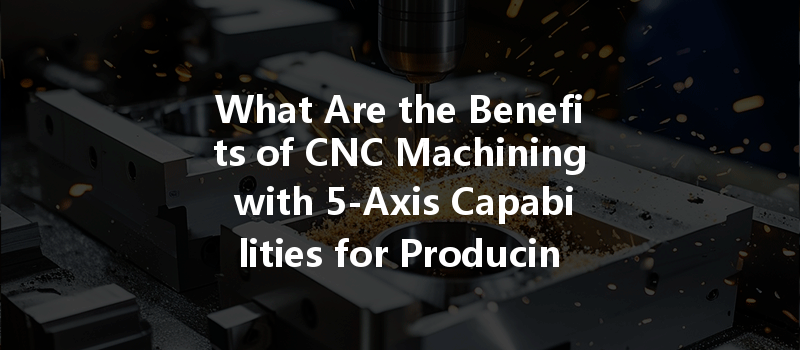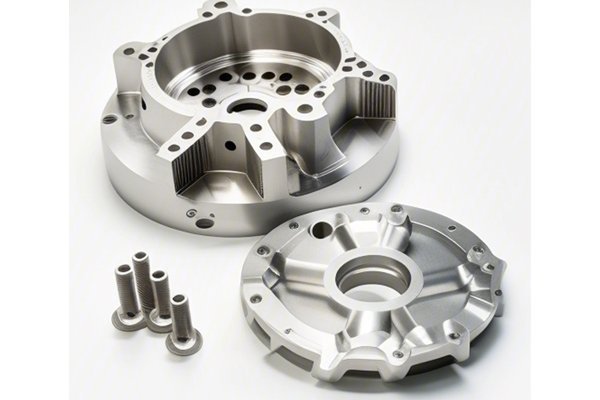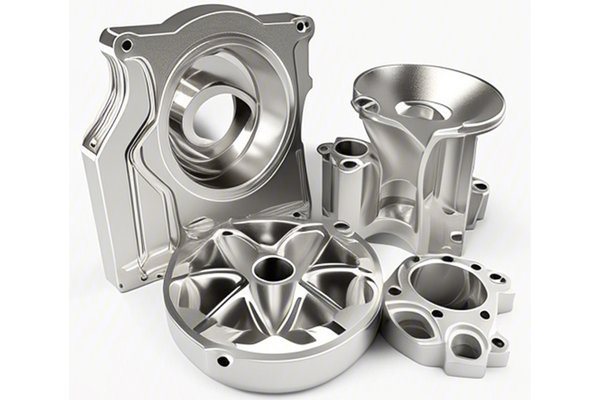Did you know that the global CNC machining market is expected to grow by over 6% annually, reaching a value of nearly $100 billion by 2025? As industries continue to demand higher precision and efficiency, CNC machining with advanced capabilities, particularly 5-axis machining, has become a cornerstone for manufacturers. But what exactly makes 5-axis machining so beneficial for producing precision parts? In this comprehensive blog, we will dive deep into the myriad advantages of this innovative technology, covering everything from efficiency and accuracy to the ability to work with complex geometries.
Understanding CNC Machining
What is CNC Machining?
Computer Numerical Control (CNC) machining is a manufacturing process that utilizes computerized controls to operate machinery. It allows for more flexibility and precision than traditional manual machining methods. CNC machines interpret a CAD (Computer-Aided Design) file, translating the design into a series of precise movements, resulting in high accuracy and repeatability.
The Traditional vs. 5-Axis Machining
Traditional CNC machines usually operate on 3-axis systems, moving along the X, Y, and Z axes. While effective for many applications, the limitation in movement can complicate the machining of intricate parts. On the other hand, 5-axis machining introduces two additional rotational axes, enabling the machine to access the workpiece from almost any angle. This capability dramatically enhances production capabilities, particularly for complex shapes and geometries.
The Benefits of 5-Axis CNC Machining
One of the primary benefits of 5-axis machining is the ability to achieve exceptional levels of precision. The simultaneous movement of multiple axes allows for more intricate cuts and less need for repositioning the workpiece. This results in tighter tolerances and higher accuracy, which are critical when producing parts for industries such as aerospace, automotive, and medical devices.
In traditional machining, complex geometries often require multiple setups—repositioning the workpiece to access different faces, introducing the potential for errors with each change. 5-axis machining, however, allows multiple sides of a workpiece to be machined in a single setup. This not only saves time but also diminishes the potential for discrepancies between setups, enhancing overall productivity.
Manufacturers often face challenges when creating intricately shaped components. 5-axis CNC machining excels in this area by allowing efficient machining of undercuts and complex contours that would be impossible or impractical to achieve with traditional 3-axis machines. This capability opens new avenues for creativity in design without compromising functionality.
Using a 5-axis CNC system leads to improved surface finishes. With better control over the tool orientation, the machine can cut at more optimal angles, resulting in smoother surfaces that require less finishing work. This not only reduces the time spent on post-processing but also lowers overall production costs.
While the initial investment in 5-axis CNC machines may be higher than traditional machines, the long-term savings can be significant. The efficiency gains from reduced setup times, fewer tools required, and improved accuracy all contribute to lower overall manufacturing costs. Additionally, the capability to produce highly complex parts in one setup can reduce labor and material waste.
5-axis CNC machining is adept at working with a range of materials, including metals like aluminum, titanium, and alloys, as well as plastics and composites. This versatility means that manufacturers can adapt their processes to meet ever-evolving market demands without needing to invest in multiple machines.
With the ability to handle complex parts that ordinarily require several operations, 5-axis machining can speed up the entire manufacturing process. This increase in speed can be a critical advantage, particularly in industries where time-to-market is crucial. Rapid production capabilities also enhance competitiveness.
By minimizing the number of times a tool has to be repositioned, 5-axis machining not only extends tool life but also reduces tool wear. The optimal approach to machining reduces unnecessary stress on cutting tools, enabling them to operate effectively for longer periods.
5-axis CNC machining simplifies the workflow by reducing the number of setups and manual interventions required. This streamlining not only enhances production efficiency but also minimizes human errors, resulting in more consistent quality across batches of parts.

The need for fast iterations and rapid prototyping is growing in many industries. 5-axis CNC machining allows for quick modifications and changes to designs without the need to overhaul the entire production process. Designers and engineers can make adjustments on-the-fly, leading to a more agile product development cycle.
Challenges of 5-Axis Machining
While the advantages of 5-axis machining are compelling, it is essential to consider some of the challenges:
Implementing 5-Axis CNC Machining in Your Business
Before diving into the world of 5-axis CNC machining, it’s crucial to evaluate your specific manufacturing needs. Identify the components you need to produce, the materials involved, and the required tolerances. Understanding these factors will help you determine whether investing in 5-axis machining benefits your business.
When looking for a 5-axis machine, consider brand reputation, machine specifications, and vendor support. Research different manufacturers and models to ensure you invest in equipment that best suits your production needs.
Investing in machinery is only part of the equation; training is equally important. Ensure that your staff is adequately trained to operate and maintain the new machines effectively. Many manufacturers offer training programs that can enhance your team’s skill set.
Advanced CNC coding software is essential for maximizing the capabilities of 5-axis machines. Choosing the right software can streamline the design process and improve productivity. Look for software that integrates seamlessly with your existing systems.
Before fully committing to 5-axis machining, run initial tests and prototypes to ensure that the technology meets your expectations. This step allows you to address any potential issues before scaling up production.
Implementing 5-axis machining is not a one-time endeavor. Keep an eye on industry trends, technologies, and methods for continuous improvement. Regularly evaluate your processes for opportunities to optimize and further enhance productivity.
The benefits of 5-axis CNC machining for producing precision parts are undeniable. From enhanced accuracy and efficiency to the ability to tackle complex geometries, this technology offers a comprehensive solution for modern manufacturing challenges.
Investing in 5-axis CNC machines will undoubtedly elevate your production capabilities and improve your bottom line. However, it’s essential to weigh the advantages against the challenges and carefully plan for integration into your operations.
As industries evolve, the demand for precision, speed, and adaptability continues to grow. 5-axis CNC machining not only meets these demands but also prepares businesses for future innovations.
By understanding the capabilities and benefits of this technology, manufacturers can position themselves favorably in an increasingly competitive landscape, paving the way for sustained success.
Remember, the key to thriving in the modern manufacturing world lies in embracing advanced technologies like 5-axis CNC machining. It’s worth considering whether your business is ready to make this leap forward toward enhanced productivity and innovation.






